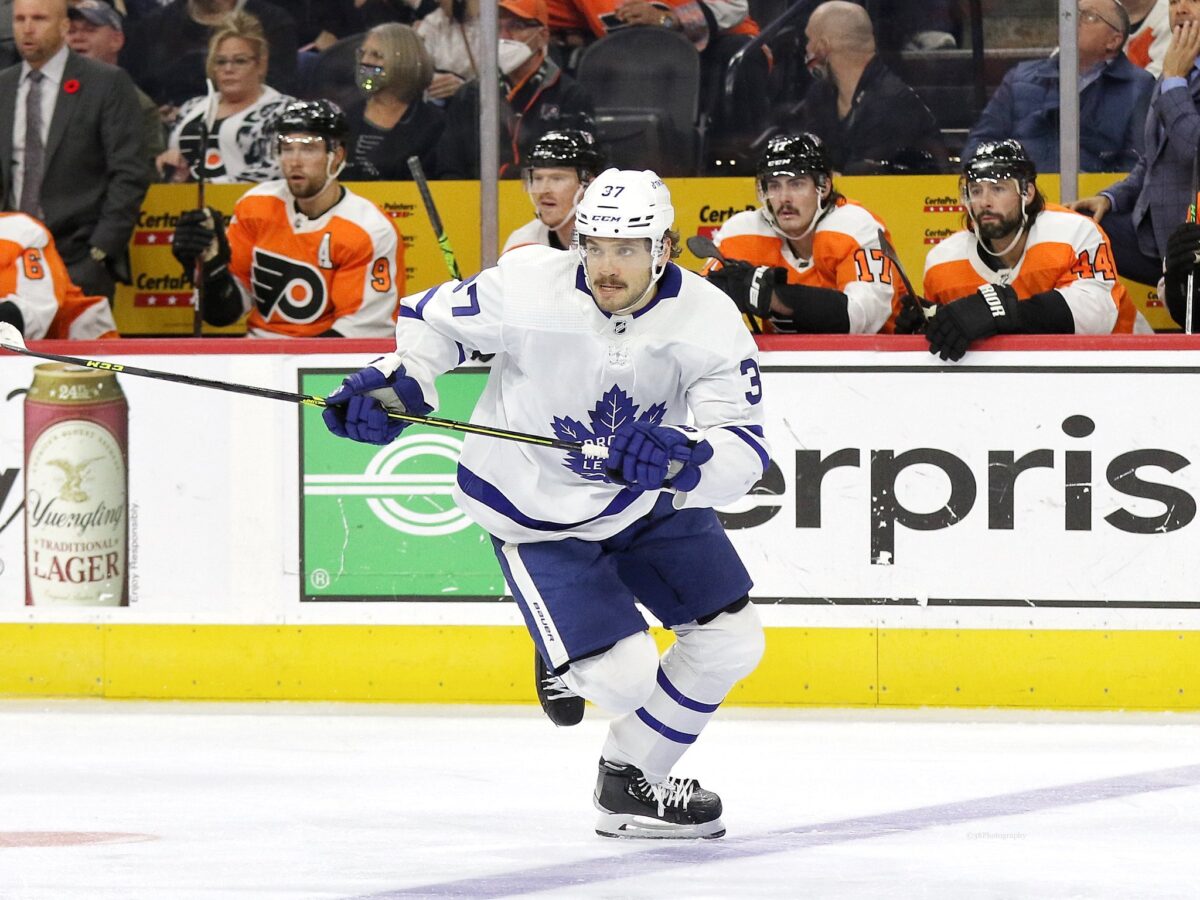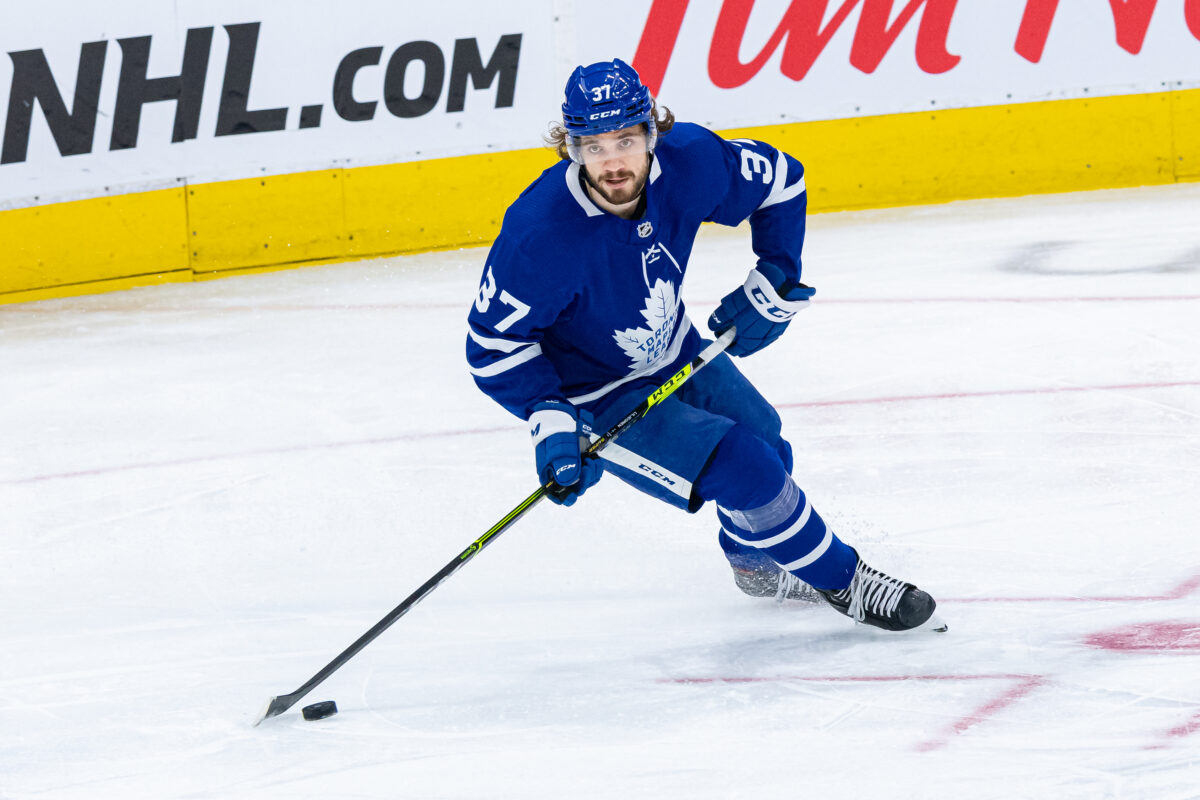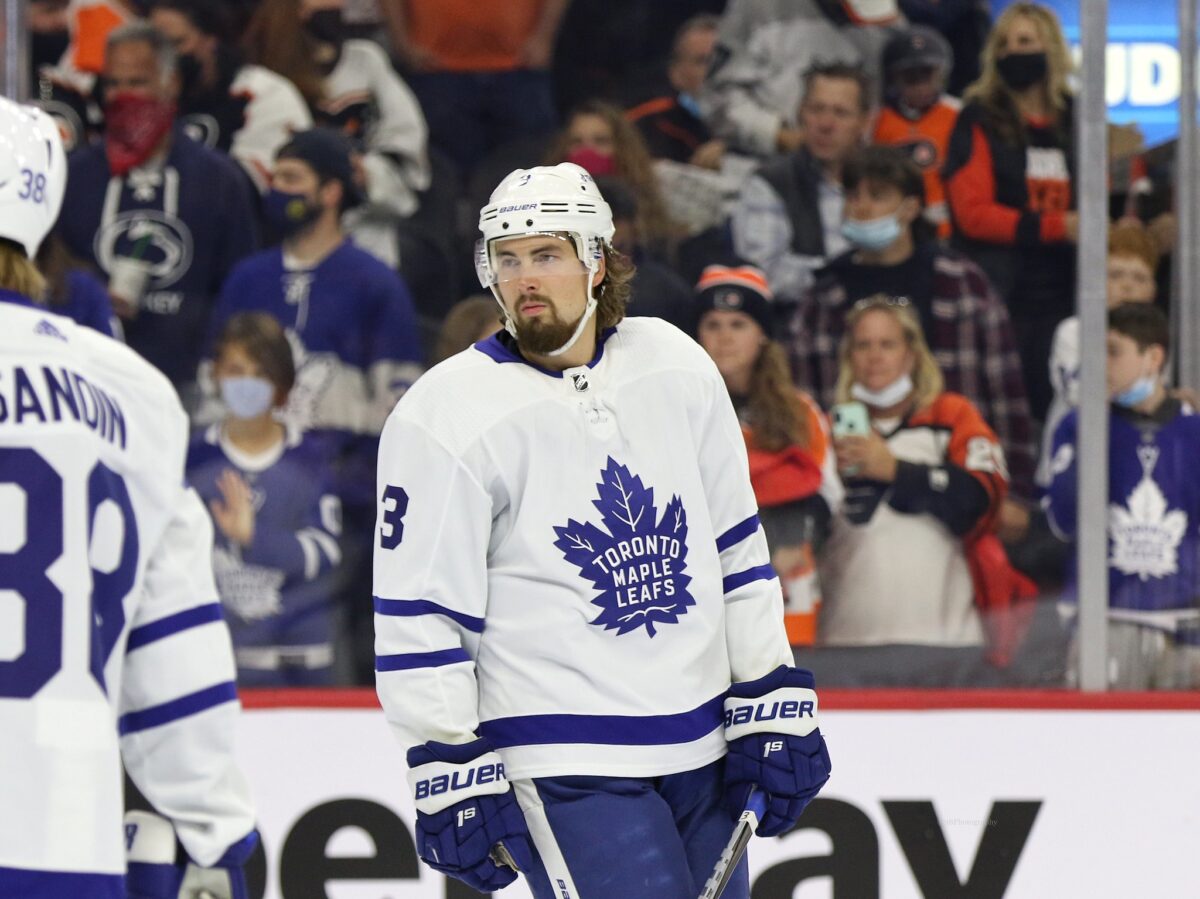In this post, we’ll follow up on yesterday’s player reviews of the Toronto Maple Leafs’ young Swedish defensemen Timothy Liljegren and Rasmus Sandin. Our review noted that, while both young defensemen seemed always to be talked about together, they are far from mirror images of each other. In this post, we’ll take a look at which of the two players we believe is the better player.
In addition, we’ll review Justin Holl’s play. As a defenseman, Holl is different still from either Sandin or Liljegren. What does Holl bring to the ice as a partner on a defensive pairing?
Who’s Better, Liljegren or Sandin?
Maple Leafs’ fans seem to be split on who they think is the better player between Liljegren and Sandin. As noted in yesterday’s post, we look at them as simply different. Using Morgan Rielly and TJ Brodie as examples, we see Sandin as capable of driving a defensive pair offensively.

Sandin has some definite upsides. For example, of the two players, Sandin is the superior playmaker and is more comfortable with the puck. He sees the ice better and he has more tools in his toolbox when he’s in possession of the puck. Sandin’s game is more similar to Rielly’s. (from “Rasmus Sandin is trying to make his presence felt on the Leafs’ blue line, anyway he can,” Kevin McGran, Toronto Star, 15/01/2022).
Related: Ranking NHL Teams By Defencemen
Liljegren also has his upsides. Like Brodie, he’s more of a complementary, and support player. Thus far in his NHL career, he does not have the ability to drive play like Sandin. Also, similar to Brodie, Liljegren is more of a player who’ll take care of the defensive end of things first. That allows his defensive partner to take more opportunities offensively.
Although Liljegren Is Bigger, Sandin Is More Physical
Sandin stands 5-foot-11 and weighs 178 pounds. On the other hand, Liljegren stands 6-foot-1 and weighs 192 pounds. One other observation we’ve made as we’ve watched both players in the AHL and the NHL is that, despite being the smaller, Sandin is the more physical of the two players. He’s much more effective in knocking players off the puck using his body.

Obviously, one difference is that Liljegren is a righthander playing the right side, while Sandin is a lefthander playing the left side. And, while that didn’t stop Sandin from making his NHL debut more quickly than Liljegren, it matters more now.
Related: 10 Reasons Hockey Is the Greatest Sport on Earth
Currently, because the left side of the Maple Leafs’ lineup is fuller, more players stand between Sandin and regular ice time. That reality has been speculated as one issue holding Sandin back from signing a contract with the organization.
Given What We’ve Seen So Far, We Believe Sandin Has More Potential
At this point in their careers, we don’t see either player as being better than the other. They are just different. Right now, given their relative experience and age (Sandin is a year younger than Liljegren), we believe Sandin has more potential than Liljegren. However, both have played fewer than 100 games in the NHL, so it’s difficult to tell for sure.

Liljegren and Sandin have a history of playing together in the AHL as well as some NHL time together. If both players were to remain in the Maple Leafs’ system, it’s more than conceivable that they’d eventually become top-four partners. Their games complement each other.
Where Does Justin Holl Fit with Sandin and Liljegren?
Justin Holl’s quite a different defenseman than either Sandin or Liljegren. He plays the type of game where, if you don’t notice him, he’s playing well. He’s rarely going to stand out for doing positive things. If you do notice him, it is usually because he’s made a mistake.
Related: Maple Leafs News & Rumors: Liljegren, Ho-Sang, Steeves & Woll
Holl doesn’t dazzle us with anything he does. He uses a workmanlike effort to get the job done. While Holl doesn’t have the ability to carry a partner, he’s a decent complementary player.
As Holl showed playing alongside Jake Muzzin, if his partner plays well, he plays well. If his partner struggles, Holl struggles.
Holl’s Biggest Weaknesses: Decision-Making and Speed
Holl’s biggest weakness appears to be his decision-making when it comes to pinching. He sometimes errs. In addition, when he does get caught up ice, he doesn’t have the foot speed to get back into the play.

Our honest opinion is that we’re completely happy with Holl as part of the team’s third-pairing. We’re not confident he can handle playing up in the order on an extended basis. At the same time, if he were to be traded, we don’t think the Maple Leafs would have a difficult time replacing him.
At his age and his skillset, he does not have the same value to the team as either Sandin or Liljegren.
[Note: I want to thank long-time Maple Leafs’ fan Stan Smith for collaborating with me on this post. Stan’s Facebook profile can be found here.]